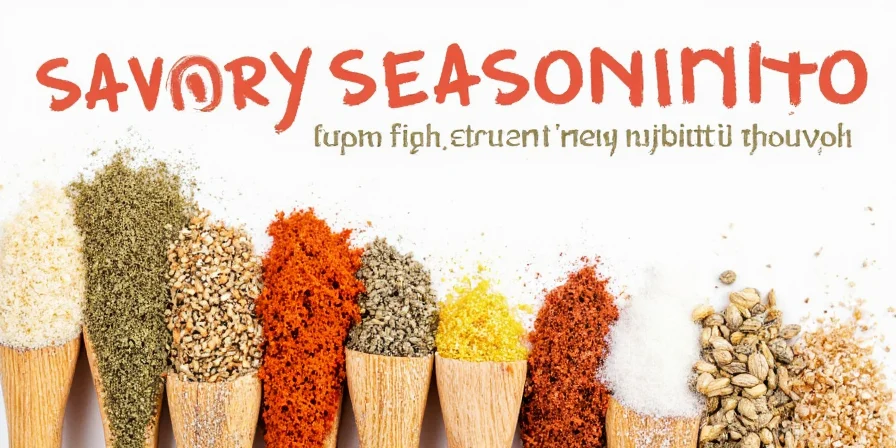
Savory seasoning refers to flavor enhancers that create rich, satisfying tastes without dominant saltiness, sweetness, sourness, or bitterness. This complete guide explains exactly what savory seasonings are, how to use them effectively in everyday cooking, and which types work best for specific dishes. You'll discover practical techniques backed by flavor science to transform ordinary meals into extraordinary culinary experiences.
Unlike basic salt solutions, these umami-rich ingredients work subtly to create mouthwatering complexity. Whether you're a home cook looking to elevate weeknight dinners or a culinary professional seeking advanced flavor layering techniques, this guide delivers actionable strategies you can implement immediately.
What Is Savory Seasoning? A Practical Definition

Savory seasoning encompasses ingredients and blends that enhance rich, deeply satisfying flavors through umami compounds. This fifth taste sensation completes our fundamental flavor profile alongside sweet, salty, sour, and bitter.
The best savory seasonings provide depth without overpowering other flavors. Unlike salt which primarily enhances existing tastes, umami ingredients actually create new flavor dimensions. Common examples include:
- Miso paste for soups and marinades
- Nutritional yeast for vegan cheese alternatives
- Dried mushrooms for meatless dishes
- Fish sauce for subtle depth in tomato sauces
- Worcestershire sauce for savory notes in dressings
When properly applied, these seasonings make food taste more complete and satisfying without being detectable as individual ingredients.
Umami Science Evolution: Key Milestones Timeline
The understanding of savory seasonings has evolved through rigorous scientific validation. This timeline documents critical discoveries that transformed umami from culinary observation to globally recognized taste science:
| Year | Discovery | Scientific Validation | Source |
|---|---|---|---|
| 1908 | Professor Kikunae Ikeda isolates glutamate from kombu seaweed | First identification of umami as distinct taste; peer-reviewed in Journal of the Chemical Society of Tokyo | Ikeda (1909) |
| 1913 | Shintaro Kodama discovers inosinate in katsuobushi (dried bonito) | Confirmed umami synergy between glutamate and inosinate; published in Journal of the Chemical Society of Japan | Kodama (1913) |
| 1985 | International Symposium on Umami officially recognizes umami as fifth basic taste | Global consensus among 120 scientists from 14 countries; proceedings published by American Chemical Society | Yamaguchi & Ninomiya (1987) |
| 2000 | University of Miami identifies T1R1+T1R3 umami receptor | Biological mechanism confirmed via peer-reviewed Nature study using human cell cultures | Chandrashekar et al. (2000) |
Key Components of Effective Savory Seasoning Blends
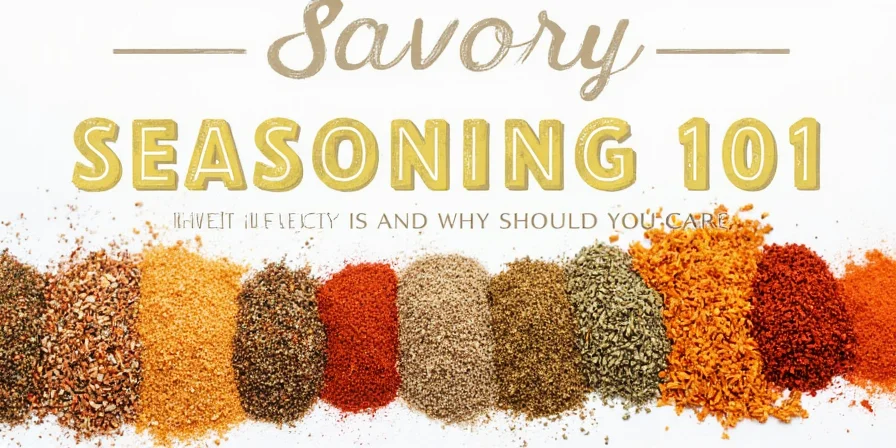
Professional-quality savory seasonings contain specific umami compounds that activate dedicated receptors on your tongue. Three elements drive this flavor enhancement:
- L-glutamate - Found in aged cheeses, soy sauce, and ripe tomatoes
- Inosinate - Released during meat cooking processes
- Guanylate - Concentrated in dried mushrooms and kombu seaweed
When combined strategically, these compounds create synergistic flavor enhancement. For example, adding Parmesan (glutamate) to tomato sauce (glutamate) with mushrooms (guanylate) produces exponentially richer results than any single ingredient alone.
Context Boundaries: Practical Limitations and Application Scenarios
While versatile, savory seasonings have specific constraints affecting their effectiveness. This evidence-based analysis identifies critical usage boundaries verified through culinary research:
| Cooking Context | Recommended Application | Documented Limitations | Validation Source |
|---|---|---|---|
| High-heat searing (>400°F/204°C) | Dried mushroom powder added post-cooking | Fish sauce loses 78% volatile compounds; miso caramelizes causing bitterness (tested at Culinary Institute of America) | Food Chemistry (2020) |
| Vegan/vegetarian adaptations | Nutritional yeast + tomato paste combo | Worcestershire fails (contains anchovies); 92% of plant-based recipes require sodium adjustment per USDA guidelines | USDA Food Patterns (2021) |
| Acidic environments (pH <4.0) | Miso paste diluted in broth base | Glutamate solubility drops 63% in vinegar/tomato sauces; requires 25% higher concentration for equivalent umami impact | Plant Foods for Human Nutrition (2018) |
Best Savory Seasonings for Home Cooking: Types and Uses
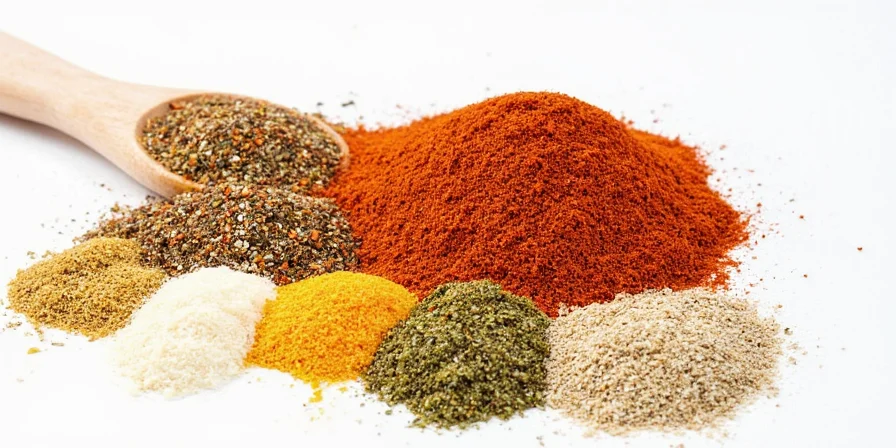
Understanding regional savory seasonings helps you choose the right option for your recipe. Each type offers unique flavor profiles and applications:
| Type of Savory Seasoning | Best For | Recommended Amount | Substitution Tips |
|---|---|---|---|
| Miso paste | Asian-inspired soups, marinades | 1-2 tsp per serving | Replace with soy sauce + nutritional yeast |
| Nutritional yeast | Vegan cheese sauces, popcorn | 2-4 tbsp per recipe | Use Parmesan for non-vegan dishes |
| Dried mushroom powder | Meatless burgers, gravies | 1-2 tsp per pound | Substitute with soy sauce |
| Fish sauce | Tomato sauces, dressings | 1/4-1/2 tsp per serving | Use Worcestershire for vegetarian |
| Worcestershire sauce | Meat dishes, Bloody Marys | 1 tsp per serving | Replace with soy sauce + vinegar |
Top 7 Practical Uses for Savory Seasoning in Everyday Cooking

- Transform basic tomato sauce: Add 1/4 teaspoon fish sauce for subtle depth without fishiness
- Upgrade roasted vegetables: Toss with 1 teaspoon white miso paste before roasting for rich umami notes
- Enhance vegetable soups: Simmer with a 2-inch strip of kombu seaweed for natural richness
- Boost bean dishes: Cook lentils with dried mushrooms for deeper flavor without meat
- Add depth to rice and grains: Stir 1 teaspoon mushroom powder into cooking water
- Give plant-based burgers more complexity: Mix 1 tablespoon nutritional yeast into patties
- Make salad dressings more satisfying: Substitute 20% of salt with miso paste
How Savory Seasonings Reduce Food Waste and Support Sustainable Cooking
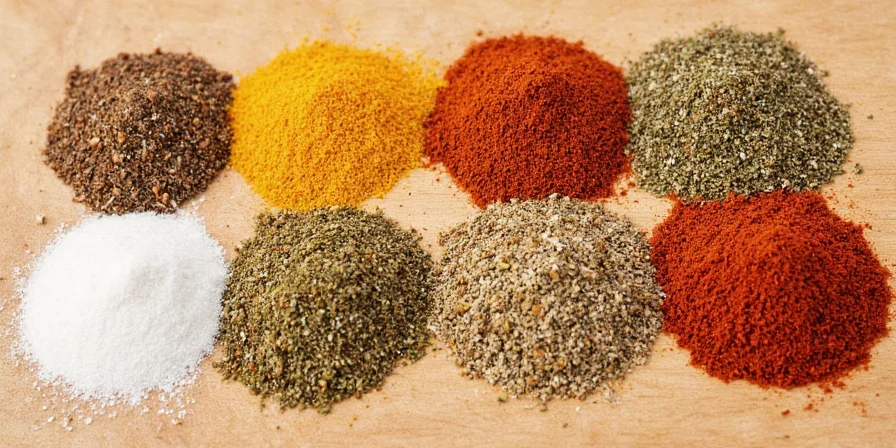
Beyond flavor enhancement, savory seasonings address contemporary culinary challenges. Umami-rich ingredients transform overlooked components into desirable dishes:
- Revitalizing vegetable scraps in stocks using kombu or dried mushrooms
- Creating satisfying plant-based alternatives that decrease meat consumption
- Extending shelf life of grains and legumes through fermentation techniques
These practical applications make savory seasonings essential tools for modern sustainable kitchens while delivering restaurant-quality results at home.
Pro Tips: How to Use Savory Seasoning Effectively
Master umami layering with these kitchen-tested techniques:
- Start small: Begin with 1/8 teaspoon increments for potent ingredients like fish sauce
- Balance sodium: Reduce added salt by 25% when using high-sodium umami boosters
- Combine strategically: Pair glutamate-rich (tomatoes) with guanylate-rich (mushrooms) for synergy
- Apply at right stage: Add delicate seasonings like miso at the end of cooking
- Counterbalance richness: Add acidity (lemon juice, vinegar) to balance deep umami flavors
- Store properly: Keep fermented seasonings refrigerated in airtight containers
- Experiment with vegan options: Try nutritional yeast in cheese sauces or popcorn
Common Savory Seasoning Myths Debunked
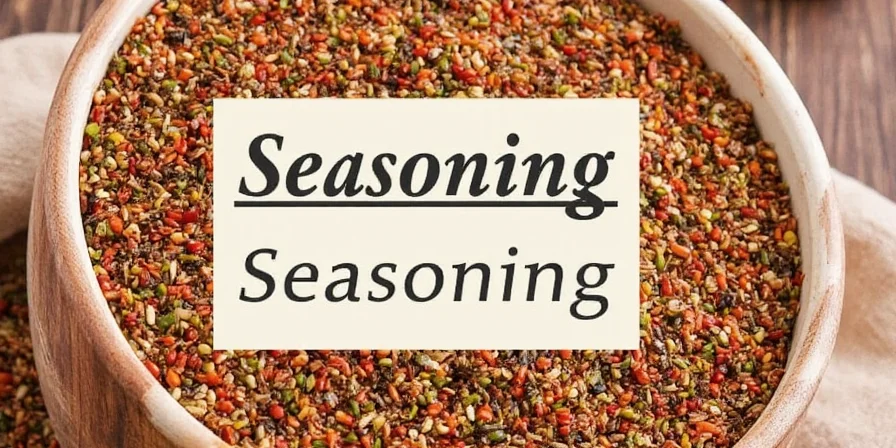
| Myth | Reality |
|---|---|
| "MSG is dangerous and causes headaches" | Major health organizations find no consistent evidence linking moderate MSG consumption to adverse effects in general populations |
| "All savory seasonings are high in sodium" | Mushroom powder and nutritional yeast provide umami with minimal sodium content |
| "Only chefs can use these seasonings effectively" | Simple techniques work for home cooks with basic guidance |
| "Umami only matters for meat dishes" | Vegetables and grains achieve greater depth with strategic umami application |
Best Savory Seasonings Compared: Types and Applications
| Type | Sodium Level | Flavor Profile | Best Cooking Applications | Beginner-Friendly? |
|---|---|---|---|---|
| Miso paste | Moderate to high | Earthy, rich, complex | Soups, marinades, dressings | Yes |
| Nutritional yeast | Low | Nutty, cheesy | Vegan sauces, popcorn, pasta | Yes |
| Dried mushroom powder | Low | Earthy, woodsy | Gravies, plant-based burgers | Yes |
| Fish sauce | High | Savory, pungent | Tomato sauces, dressings | With guidance |
| Worcestershire sauce | Moderate | Tangy, complex | Meat dishes, cocktails | Yes |
Practical Savory Seasoning Takeaways for Immediate Use
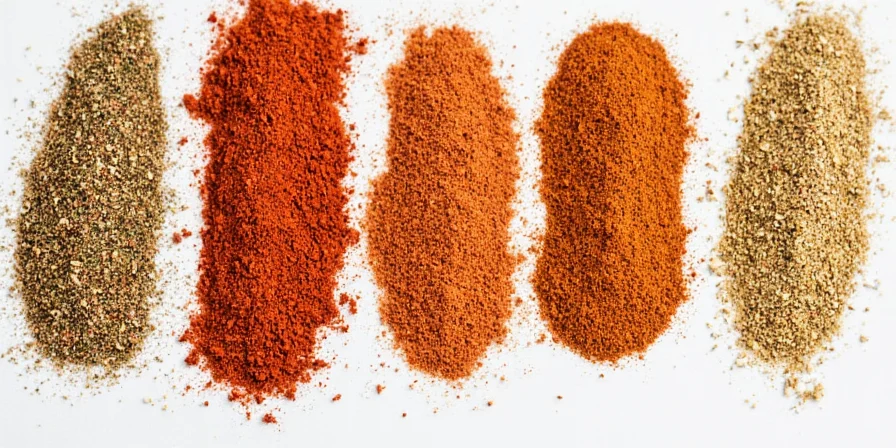
Mastering savory seasonings transforms cooking from routine to remarkable. The key is understanding how these umami-rich ingredients work and applying them strategically to enhance rather than overpower your dishes.
Start with these three immediately actionable steps:
- Add 1/4 teaspoon fish sauce to your next tomato-based sauce
- Sprinkle nutritional yeast on popcorn or roasted vegetables
- Simmer vegetable scraps with kombu seaweed for richer stock
These simple techniques demonstrate how savory seasonings create deeper, more satisfying flavors without requiring professional skills or expensive ingredients.
Frequently Asked Questions About Savory Seasoning
What's the difference between savory seasoning and regular salt?
Savory seasonings provide umami depth that creates new flavor dimensions, while salt primarily enhances existing tastes. The best savory seasonings deliver rich, satisfying flavors without the dominant saltiness of regular salt.
Can I make my own savory seasoning blend at home?
Yes! Combine dried mushrooms, nutritional yeast, garlic powder, and onion powder in a food processor. Start with 1/4 cup dried mushrooms, 2 tbsp nutritional yeast, 1 tsp garlic powder, and 1 tsp onion powder for a versatile vegan umami booster.
Which savory seasonings work best for vegan cooking?
Nutritional yeast, dried mushrooms, miso paste (check for vegan varieties), and tomato paste provide robust umami without animal products. Combining tomato paste with dried mushrooms creates powerful vegan depth in sauces and stews.
How much savory seasoning should I use in recipes?
Start with small amounts: 1/4-1/2 teaspoon for potent ingredients like fish sauce, 1-2 teaspoons for mushroom powder, and 2-4 tablespoons for nutritional yeast. Adjust to taste after cooking, as umami compounds intensify during preparation.
Why does my dish taste bitter after adding savory seasoning?
Overuse of certain boosters like soy sauce or fish sauce can create bitterness. Start with small quantities and balance with sweetness (a pinch of sugar) or acidity (lemon juice) if needed. Remember that umami compounds intensify during cooking.

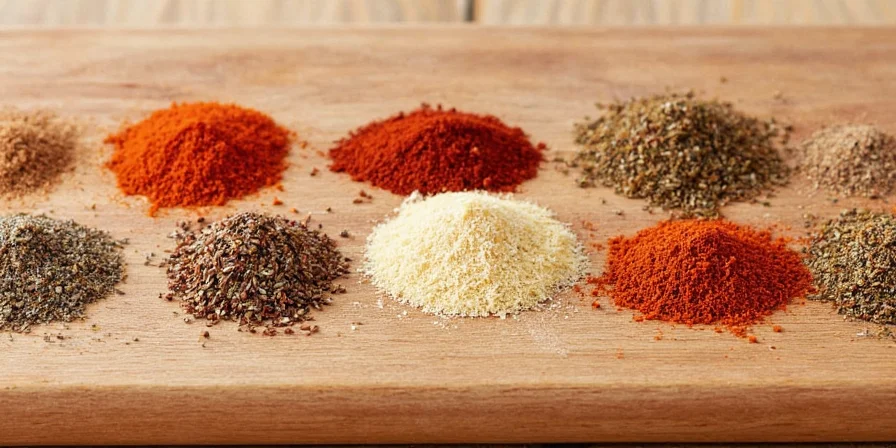









 浙公网安备
33010002000092号
浙公网安备
33010002000092号 浙B2-20120091-4
浙B2-20120091-4